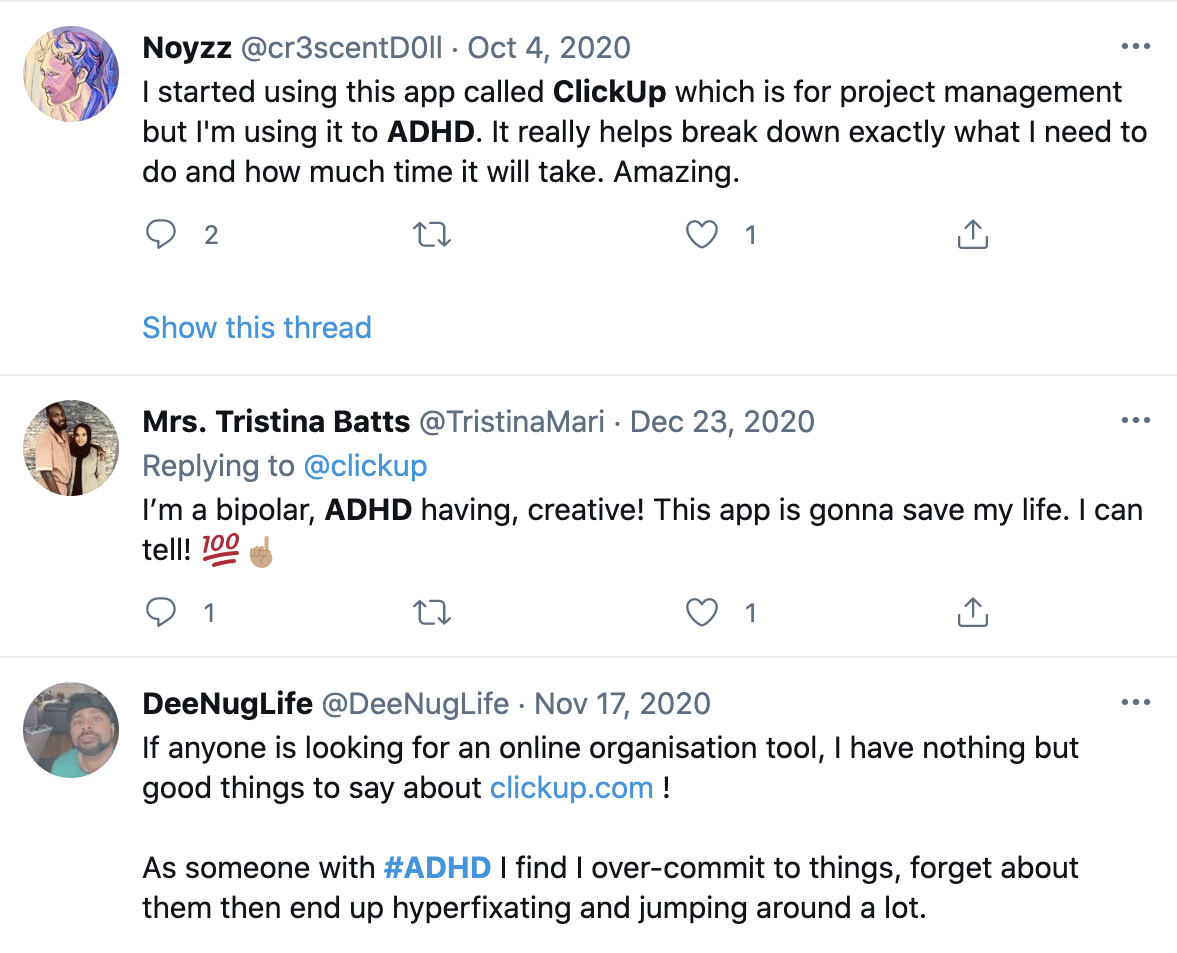

Here’s a hot take: the infamous “Diversity Day” episode of The Office truly set back how we value diversity in the workplace.
But maybe not for the reasons you think.

Regardless of how funny or cringe-worthy you find this episode, my biggest problem (besides the lazy punching down) is that it still reflects the commonly held idea that “diversity” in the workplace pertains to just race, gender, sexual orientation—that’s about it.
Make no mistake… these three facets are absolutely crucial, business-boosting components of diversity; however, there’s another aspect of human diversity that has only just begun to be valued in the workplace: Neurodiversity.
It’s not just about raising awareness of the value in hiring people who think, learn, and interact with others differently than the norm; it’s about getting business leaders to audit their own approaches to inclusivity.
Let’s discuss how!
What is Neurodiversity?
It’s totally cool if you’re not familiar with the term; until putting this blog together, neither was I.
So you can imagine my surprise when I realized, “Oh man, I myself am neurodiverse!”
Neurodiversity is a broad label that pertains to roughly 20% of the population with neurological variations often lumped into the “disability” category. Things like being on the autism spectrum, having dyscalculia, or living with anxiety disorders make someone neurodiverse. Someone who doesn’t have any neurological or cognitive differences is considered a neurotypical person.
The biggest goal for a neurodiverse person is feeling empowered by their differences, not lesser for having them. It can be a source of inspiration to know that our history and culture have been shaped by many neurodiverse individuals, from entrepreneur Elon Musk (ASD) to Olympian gymnast Simone Biles (ADHD), from scientist Temple Grandin (autism) to queen of the world Cher (dyslexia).
What will further empower the millions of bright, talented, neurodiverse professionals is simply having more businesses rethink what setting their workforce up for success looks like on a spectrum. The first step? Listen to the people!
My Adventures in ADHD
Hello, my name is Mandy, and I’m an adult currently living with inattentive ADHD and panic disorder. I’ve dealt with a few other neurologically rooted issues while growing up, but I have either largely overcome or drastically minimized their interference.
The ADHD and panics, however, have been my ride-or-dies since the beginning, and I don’t think they’re going anywhere soon.
Check out these ADHD apps!
I accept that these challenges help make me who I am, but I still often struggle with viewing them as anything but potential saboteurs. It doesn’t help that when I confide in friends or managers that I have ADHD, I’m worried that they automatically picture this is what’s going on in my brain:

Or that they think a panic attack is just a dramatic response to an understandably stressful development, like this:

In reality, my ADHD is less about being easily distracted by shiny objects and more about constantly forgetting things, having a poor natural concept of time, and having a primal urge to follow my whims before my needs.
When it comes to disclosing my panic disorder, my gut reaction is that I have to prove I’m not just a neurotic worry-wart who can’t handle life’s stressors. If anything, my panic attacks are rooted in my threshold for stress being so high for so long that, to simplify it, my brain thinks it’s most comfortable this way. That’s why it hits me like a Mack truck when seemingly out of nowhere, even while doing things I enjoy, all the adrenaline I subconsciously hoard is unleashed by one single worrying thought or bodily sensation. Before I can think, my entire body goes into the same fight-or-flight mode it would if that Mack truck was actually about to hit me.
But like any other neurodiverse adult, my differences aren’t my choice but they are my responsibility. And like any other human, each day requires some mental maintenance to make sure I’m setting myself up to employ my strengths while learning to improve my natural weaknesses—especially at work.
Making it Work at Work
It’s encouraging to know that more and more organizations are starting to realize that people who truly think outside the box often require an out-of-the-box approach to management and structure from professional leadership.
For me, working for a platform that is non-opinionated and rooted in organization, custom visualization, and built-in communication has helped me realize that there are tools that work with the way my brain is wired to work and that my differences can also be my strengths.
In the midst of all of this neurological navel-gazing, I came across many other professionals who had the same “aha!” moment as me when they discovered ClickUp. Kyle on Twitter said it better than I could:

As I scrolled back further, I was delighted to see that even before I discovered ClickUp myself, people had been sharing how this non-opinionated, customizable platform had leveled up their work as neurodiverse individuals. If you’d like to know my perspective, I’ve also put together my own quick guide for how users with ADHD can use ClickUp.
Bonus: Organization Tools for Adults with ADHD

Yet 140 characters can only do so much. I wanted to hear what other neurodiverse professionals, ClickUp users, and advocates had to say about how an employer can walk the walk after they’ve talked the pro-neurodiversity talk.
Communication

- “I prefer written correspondence generally; it leaves little room for error or miscommunication. I’m in a position of power so I need to maintain the respect of both our clients and my employees, but sometimes I have trouble looking people in the eye when I speak to them in person. This can offend some people, so it’s something I work hard on.” —Josh P., Creative Director/ Senior Project Manager (autism spectrum, ADHD)
- “In-person communication is overwhelming and masking ASD [Autism Spectrum Disorder] is exhausting. I like clear, to-the-point communication which often gets mistaken as rudeness, which is also why I like written communication. Plus, I can always go back and reference it.” —Ashleeta D., Editor (autism spectrum)
- “My dyslexia makes it hard to rely on written communication. I love Zoom meetings, phone calls, or speaking one-on-one in person. My nightmare is a Slack channel that is just constantly showing new reply after new reply. Just call me!” —Luca D., Fashion Designer (ADHD, dyslexia)
- “I have sensory issues and can get extremely self-conscious talking directly to people; so much so that it can impact my work. My job isn’t client-facing which is good, but I still need to communicate with my team and other departments. I prefer Slack messages as my primary way to communicate and Zoom meetings as an alternative to in-person meetings.” —Alex K., Software Engineer (autism spectrum, OCD)
Organization

- “I use the free version of ClickUp for managing my personal life and school. Behavioral treatments for ADHD emphasize that a to-do list, a calendar, a notepad for delaying distractions, a timer, work documents, etc, should be in one place… [Using] ClickUp really helped me feel in control of my life again.” —Nadir A., Student (ADHD)
- “It’s funny how people assume those with [Obsessive Compulsive Disorder] are all well-organized. Sorry folks, not me! My brain loves repetition though, so I’m most productive when I have a fairly predictable schedule and a clean, visual place to sort my tasks. Feeling like I am in control of how my workflow looks is such a relief to my brain.” —Kelly F., Staff Photographer (OCD)
- “Too many notifications and emails are so overwhelming, as are too many external distractions. I’m obsessed with making lists. I tend to get hyper-focused on one task so keeping all my tasks written down and laid out in front of me has made a huge difference.” —Ashleeta D.
- ” I can get hyper-focused in my work which means I’m moving a mile a minute and my body can’t keep up with how fast my brain is thinking. Then I got myself and my team on a productivity app that’s working well so far. Transparency in a work environment is important to me, as is writing out tasks and being able to check them off when they’re completed. Work apps establish a clear line of communication, without which I wouldn’t be able to communicate my thought process with others as effectively. It provided clarity and understanding. It’s instantaneous.” —Josh P.
Environment

- “I work from home quite well and would utterly fail in an office or retail environment.” —Philip R., Illustrator (autism spectrum)
- “When I have to work in an office, an open space with high ceilings and some pops of bright color eases any anxieties I would get otherwise. I like it dark generally because it helps me stay focused on my screen(s). I feel more productive and less anxious working from home, though.” —Josh P.
- “If I need to be in the office I need to be able to put on my headphones and just work without distraction. I love when meetings are set on the same day and time each week; predictability at work is calming.” —Ashleeta D.
- “I prefer working remotely or in a small office where I can close the door to avoid dealing with noise that can be distracting at best and overstimulating at worst.” —Anonymous (autism spectrum)
Leadership

- “Not everyone learns the same way, so training and instructions need to be made accessible for those of us [who are neurodiverse]. Having others understand that small-talk isn’t for everyone would be nice, too!” —Ashleeta D.
- “Not being able to leave comments or additional info [without hitting a paywall in a productivity app] really frustrated me, because I hate looking at my to-do list, then trying to find the link, or location, or phone number, or document somewhere else. I never thought there was a single app that would be able to help me. I have already recommended [ClickUp] to many of my friends who either have ADHD or who would like to improve their productivity and think more organizations should implement it too.” —Nadir A.
- “I wish more workplaces had flexible hours and scheduling. I also feel that most employers don’t respect anxiety, ADD, depression, or social awkwardness. These can be crippling and extremely difficult to conquer in the moment. Most employers I’ve worked for think that I’m just a hypochondriac, but that’s not the case. I want to work. I want to do great work, and I do. I just wish there was more sensitivity for mental health and those on the autism spectrum.” —Josh P.
What’s Next for Neurodiversity at Work
When managed, I know that my neurological differences help contribute to my best qualities as a person. In a supportive job that provides me with tools that work the way I do, my ADHD means I’m naturally focused and efficient with creative tasks, and that my constant stream of new ideas has an organized place to live. I also see my panics as a sometimes-side-effect to my valuable ability to thrive under real—not imagined—pressure every day.
There are benefits and talents in absolutely every variation of neurodiversity, and society is finally coming around to seeing it. That thankfully includes in the workplace, which is why more and more companies must start implementing productivity tools, flexible work options, and a fresh mindset in leadership that reimagines what truly makes an employee a star.
One last thing—see this weird 3D rendering?

This is a myosin protein dragging an endorphin along a filament to the inner part of the brain’s parietal cortex, which creates happiness.
You’re looking at happiness.
At the end of the day, isn’t that what every brain wants?



